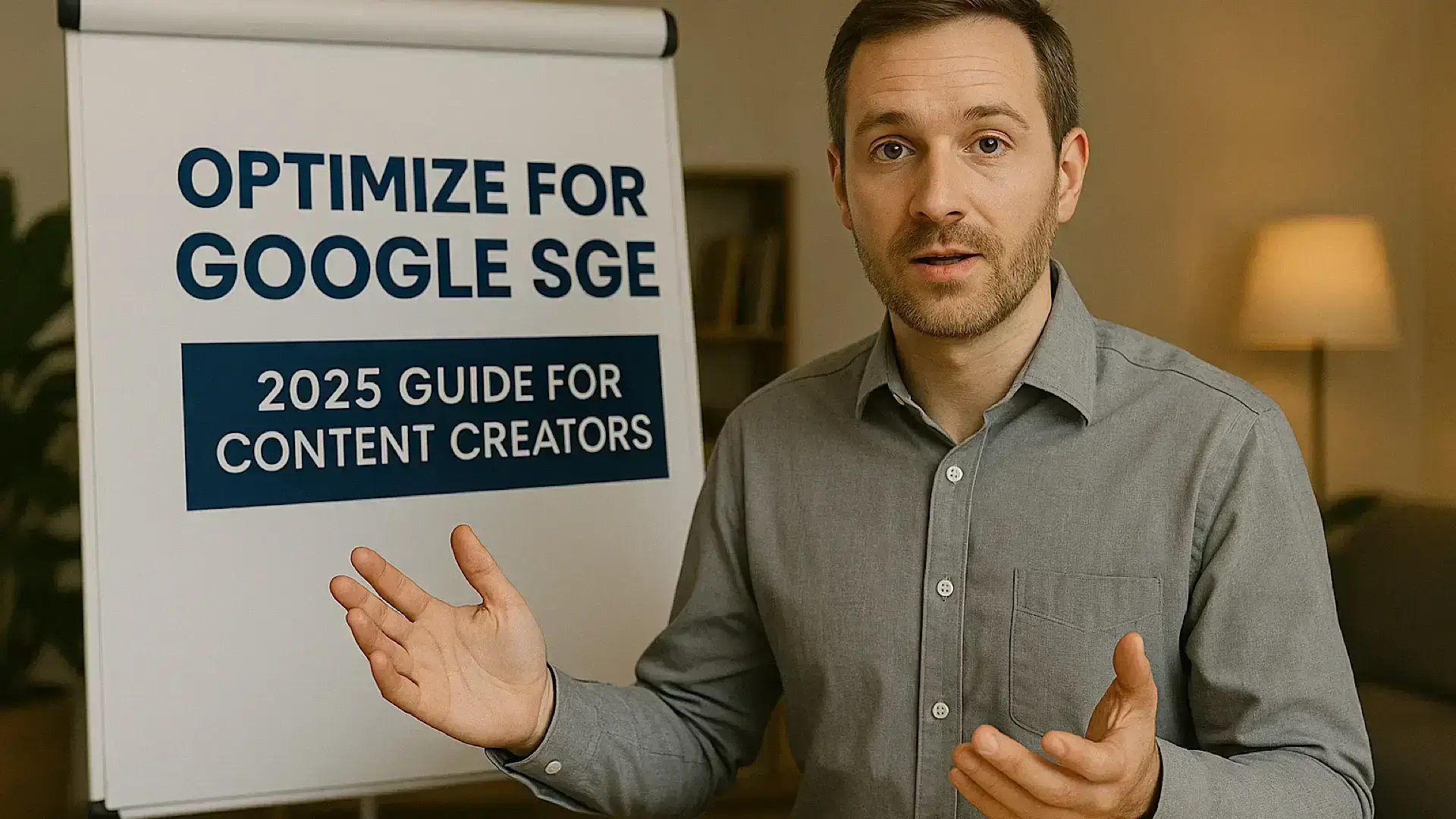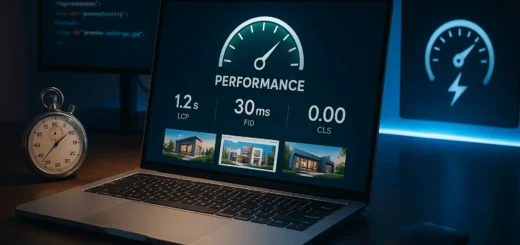Mastering Google’s SGE: The Ultimate Guide for Content Creators

Understanding Google’s Search Generative Experience: The New Frontier
Optimize for Google SGE to stay competitive in the evolving AI-powered search landscape. As Google’s Search Generative Experience becomes the new standard, content creators must adapt their strategies to maintain visibility, traffic, and authority in search results.
SGE doesn’t just change how information appears—it fundamentally transforms how users interact with search results. Instead of clicking through to websites, users can now get comprehensive answers directly in the search interface, potentially reducing traditional organic traffic.
According to early data from Search Engine Journal, pages featured in SGE snapshots can see click-through rates increase by up to 28%, while non-featured content may experience declining visibility. For content creators and affiliate marketers, adapting to this shift isn’t optional—it’s essential for survival. If you’re just starting out, building on a solid foundation is critical—our comprehensive guide, How to Start a Blog and Make Money in 2025: A Complete Beginner’s Guide, walks you through the exact blueprint we used to launch profitable blogs in record time.
How Google SGE Changes the Content Game
Before diving into optimization strategies, let’s understand exactly what makes SGE different:
- AI-Generated Overviews: Google creates comprehensive summaries using multiple sources rather than showing a single featured snippet.
- Conversational Follow-ups: Users can ask related questions without starting a new search, creating a more interactive experience.
- Multimedia Integration: SGE incorporates images, videos, and product listings within its AI overviews.
- Source Attribution: Google provides links to sources used in generating its overview, offering a new traffic opportunity.
- Zero-Click Information: Users can obtain substantial information without ever leaving the search results page.
John Mueller, Search Advocate at Google, recently emphasized: “SGE doesn’t change our fundamental advice about creating helpful, people-first content. What changes is how that content might be presented and accessed.”
How to Optimize for Google SGE: 7 Proven Strategies for 2025
To successfully optimize for Google SGE, these seven strategies are critical in 2025.
1. Prioritize Structured, Well-Organized Content
SGE’s AI engine favors content it can easily parse and understand. Create clear information hierarchies using proper HTML structure:
- Use a single H1 tag for your main title
- Organize content with H2 and H3 subheadings in logical sections
- Implement schema markup to provide explicit content structure
- Create table of contents for longer articles
Pro Tip: Structure your content like a well-organized textbook—each section should build logically on the previous one, with clear transitions between topics.
2. Focus on Comprehensive Question Answering
SGE excels at answering specific questions. Identify and address the primary questions your audience is asking:
- Include a robust FAQ section that addresses common queries
- Structure key sections with question-based H2/H3 headings
- Provide clear, concise answers in the first paragraph following each question
- Use “what,” “how,” “why,” and “when” formats in your headers
Lily Ray, SEO Director at Path Interactive, notes: “SGE prioritizes content that directly answers user questions with comprehensive, nuanced responses that demonstrate true expertise.”
3. Elevate Your E-E-A-T Signals
To successfully optimize for Google SGE, you must strengthen your content’s Experience, Expertise, Authoritativeness, and Trustworthiness (E-E-A-T) signals:
- Highlight author credentials prominently
- Include personal experiences and first-hand knowledge
- For example, here’s how I created a 5-figure passive income blog based on real experience.
- Back claims with data, statistics, and cited sources
- Update content regularly to maintain freshness and accuracy
- Secure expert quotes and perspectives when possible
4. Optimize for Conversational Search Patterns
SGE is built to handle natural language processing and conversational queries:
- Target long-tail, question-based keywords
- For visual platforms, mastering Pinterest keyword research in 2025 is key to reaching the right audience – our complete strategy guide shows you how to find high-traffic, low-competition visual search terms.
- Include variations of questions (how, what, why, when)
- Anticipate and answer follow-up questions within your content
- Use natural, conversational language rather than keyword-stuffed content – a principle that applies equally well when crafting email campaigns.
- In fact, we’ve proven this approach can increase email open rates by 37% when combined with the right tools and strategies.
The table below shows how traditional keywords are evolving into conversational queries:
| Traditional Keyword | SGE Conversational Query |
|---|---|
| best running shoes | What are the best running shoes for someone with flat feet? |
| weight loss tips | How can I lose weight safely while still enjoying my favorite foods? |
| mortgage rates | How do today’s mortgage rates compare to last year’s rates? |
| chicken recipe | What’s an easy chicken recipe I can make with ingredients already in my pantry? |
| SEO strategy | How should I adapt my SEO strategy for voice search? |
5. Create Definitive, Comprehensive Resources
SGE favors content that thoroughly covers a topic from multiple angles:
Want to see this in action? Our step-by-step guide, Digital Product Creation: From Concept to Cash in 30 Days, demonstrates exactly how to build a comprehensive resource that anticipates and answers user questions at every stage of their journey—from awareness to purchase.
- Create ultimate guides and comprehensive resources
- Cover the complete buyer’s journey (awareness, consideration, decision)
- Address objections and alternatives
- Include practical examples, case studies, and real-world applications
- Provide actionable steps and measurable outcomes
6. Enhance Visual and Interactive Elements
SGE doesn’t just pull text—it incorporates visual elements in its summaries:
- Include relevant images, charts, and infographics
- Add instructional videos where appropriate
- Use comparison tables for products or solutions
- Create step-by-step visual guides
- Implement proper alt text for all visual content
7. Monitor and Adapt to SGE Performance
As SGE continues to evolve, staying adaptable is crucial:
- Track whether your content appears in SGE snapshots
- Monitor click-through rates from search console
- Analyze search term reports for changing query patterns
- Follow Google’s official updates about SGE developments
- Test different content formats and structures
SGE Optimization: A Practical Comparison Chart
| Content Element | Traditional SEO Approach | SGE-Optimized Approach |
|---|---|---|
| Keyword Strategy | Target specific keywords with exact match | Focus on topics and question clusters |
| Content Structure | Introduction, body, conclusion | Question-based sections with immediate answers |
| Headers | Keyword-focused H2s and H3s | Question-based H2s with direct answer H3s |
| Content Depth | Sufficient to satisfy search intent | Comprehensive coverage of main and related questions |
| Multimedia | Optional supporting elements | Essential components that enhance understanding |
| Source Citations | Minimal, often for backlink purposes | Abundant, enhancing credibility and expertise |
| Metadata | Focused on keyword inclusion | Structured to highlight question-answering capability |
| Updates | Periodic refreshes for SEO purposes | Regular updates to maintain accuracy and relevance |
Expert Insights on SGE Success
Rand Fishkin, founder of SparkToro and Moz, recently stated: “With SGE, Google is shifting toward rewarding content that provides the most comprehensive, accurate answers rather than content optimized for clicks. Content creators need to focus on delivering genuine value that SGE will want to feature.”
Aleyda Solis, International SEO Consultant, advises: “Don’t fight SGE—embrace it by creating content that adds unique value beyond what an AI can generate. Personal experiences, original research, and expert perspectives are what will help your content stand out and earn inclusion in SGE features.”
Barry Schwartz, Search Engine Roundtable founder, observes: “The sites we’re seeing succeed in SGE are those with established E-E-A-T, clear content structure, and comprehensive coverage of topics. It’s not about gaming the system—it’s about being the best possible resource.”
These experts all agree—those who optimize for Google SGE with comprehensive, credible content will gain lasting visibility.
The Future of Content Creation in an SGE World
As SGE continues to develop, successful content creators will need to:
- Focus on value-add content that provides insights beyond basic information
- Build genuine expertise in specific niches rather than covering topics broadly
- Develop direct audience connections through newsletters, communities, and social media
- Create multi-format content that serves different user preferences
- Emphasize unique perspectives that AI alone cannot provide
Remember that SGE represents an evolution, not a complete revolution. The fundamental principles of creating valuable, user-focused content remain the same—the delivery mechanisms are what’s changing.
FAQ: Google SGE for Content Creators
How can I check if my content is appearing in SGE results?
Currently, there’s no dedicated tool for monitoring SGE appearances. The best approach is to search for your target keywords in Chrome while opted into SGE testing, and to monitor your Google Search Console for changes in impressions or click-through rates for specific queries.
Will SGE completely eliminate clicks to websites?
No, but it will likely reduce clicks for certain types of informational queries. SGE still attributes sources and provides links to dive deeper, especially for complex topics where users need more comprehensive information than what appears in the overview.
Does schema markup help with SGE visibility?
While Google hasn’t confirmed a direct connection, implementing structured data helps search engines better understand your content’s context and structure, which aligns with SGE’s need to parse and present information effectively.
How frequently should I update my content for SGE?
Regular updates are more important than ever. Aim to review and refresh high-value content at least quarterly, with more frequent updates for time-sensitive topics or rapidly evolving fields.
Can smaller websites compete with major publications in SGE?
Yes! SGE appears to focus more on the quality and structure of individual pieces of content rather than domain authority alone. Niche expertise and comprehensive coverage can help smaller sites earn visibility in relevant SGE results.
What’s the best way to optimize for Google SGE in 2025?
The best way to optimize for Google SGE is by creating well-structured, experience-based content with conversational answers and clear E-E-A-T signals.
Conclusion: Embracing the SGE Future
To stay visible in AI-powered results, it’s essential to optimize for Google SGE using structured content, real expertise, and user-first strategies.
Google’s Search Generative Experience represents both a challenge and an opportunity for content creators. By focusing on comprehensive, well-structured content that demonstrates genuine expertise, you can not only maintain visibility but potentially gain new advantages in this evolving search landscape.
The content creators who will thrive in the SGE era are those who view AI not as a competitor but as a distribution channel—creating content specifically designed to be helpful enough that Google’s systems will want to feature it prominently.
Ready to take your SEO strategy to the next level? Join our Telegram channel “BloggingRevenue” for more cutting-edge tips on adapting to Google’s latest innovations, or check out our related posts on content strategy and SEO evolution.
If your goal is to optimize for Google SGE, focus on building content that Google’s AI truly wants to feature.








